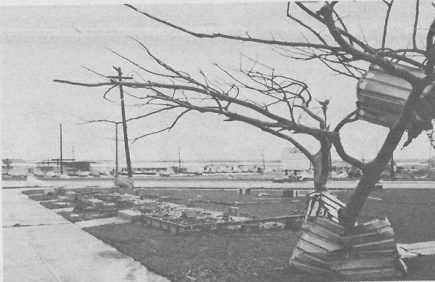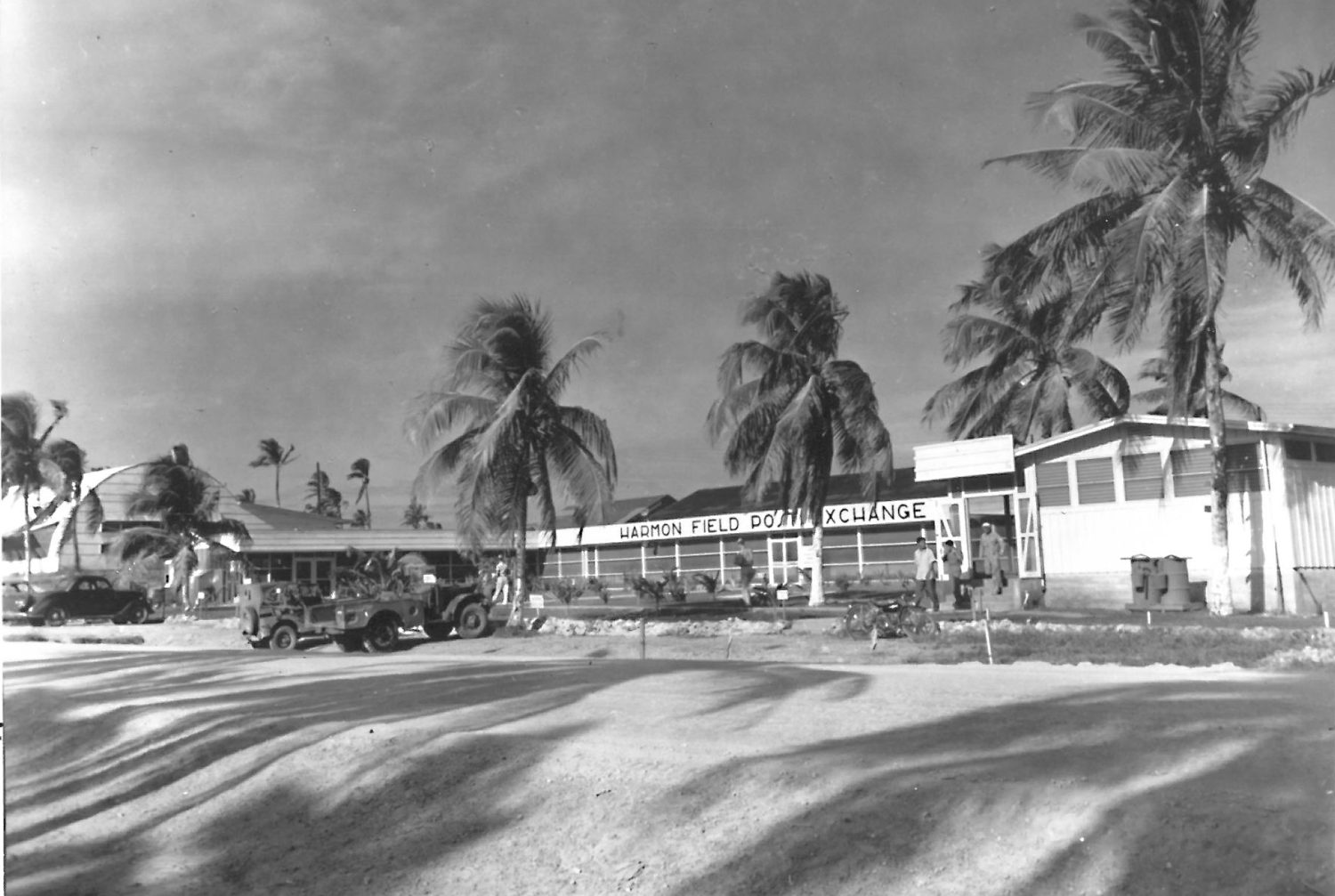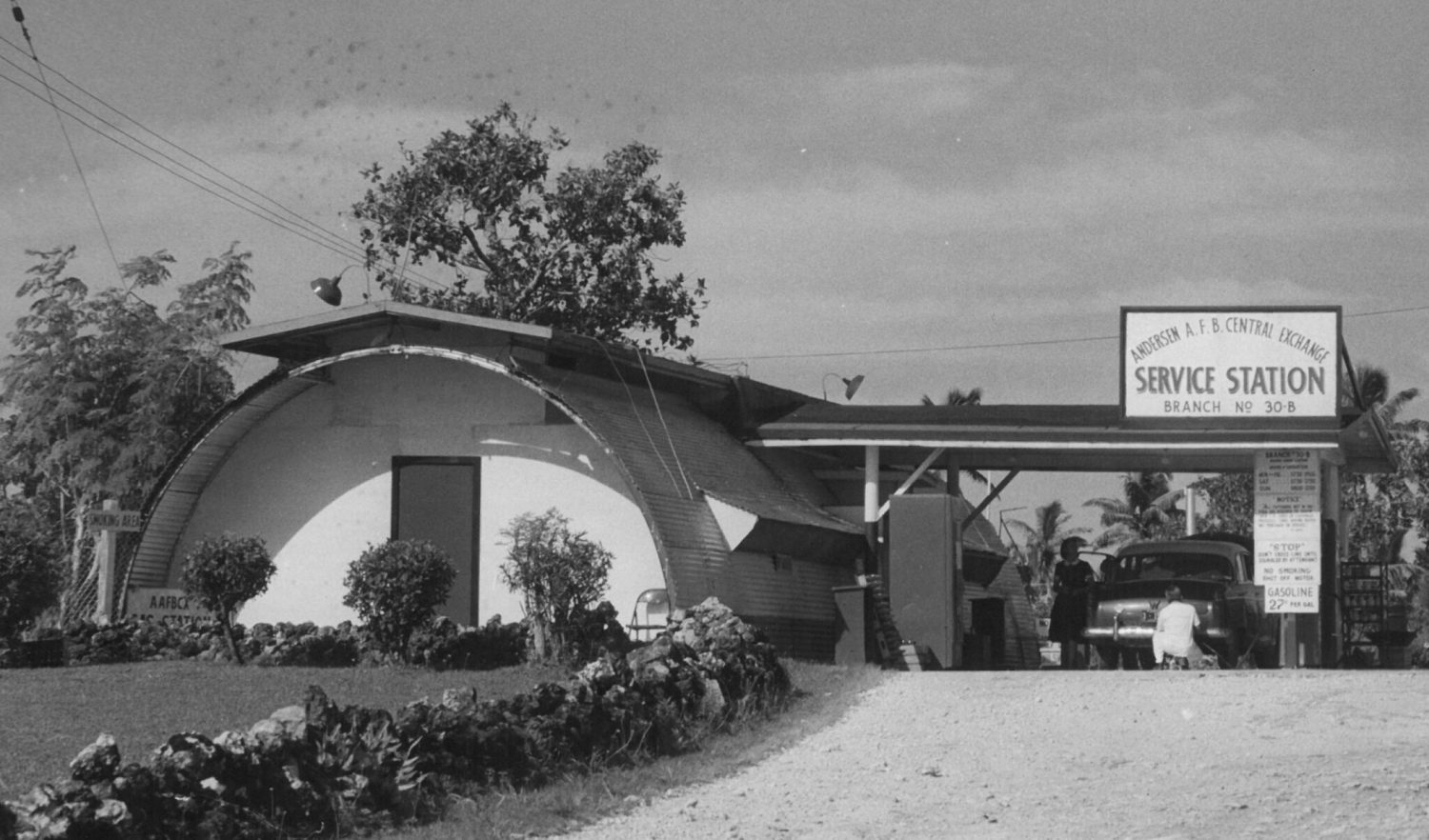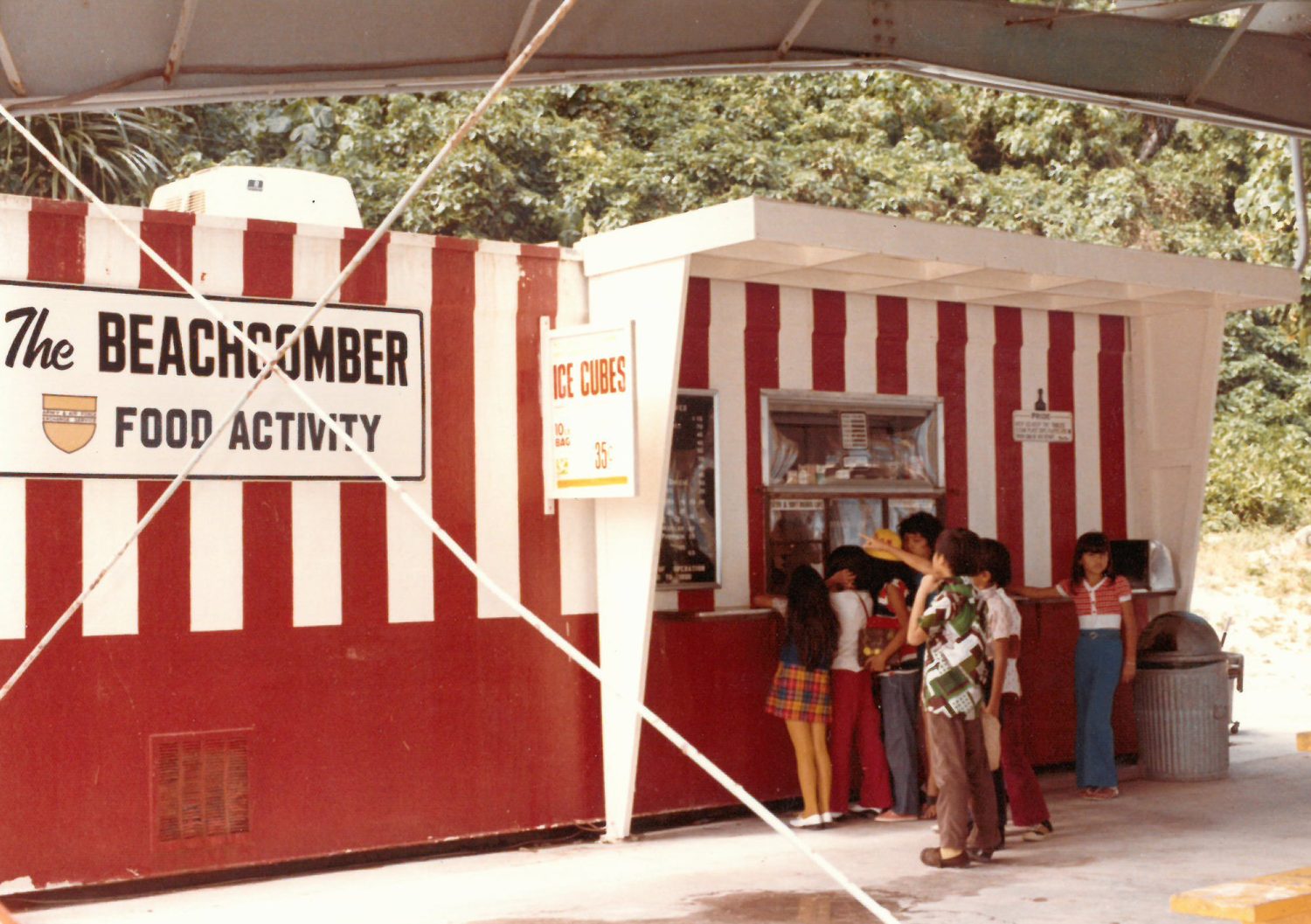#FlashbackFriday: The Exchange’s History in Guam

Guam has been in the news lately, after Typhoon Mawar, a category 4 storm, scored a direct hit on the island on May 24. The Guam Exchange team quickly reopened retail facilities after the storm passed and has been working on other recovery efforts, with support from several directorates.
But did you know that Guam’s connection to the Exchange dates back nearly to the 1895 beginning of the Exchange itself? The first exchanges on the island opened at U.S. Army garrisons after 1899, when Spain ceded the Philippines, Guam and Puerto Rico to the United States after the Spanish-American War.
Forty years of peace on the island ended three days after Pearl Harbor was bombed, when the Japanese invaded Guam. They occupied the island for more than two years, until Marines landed on Guam on July 21, 1944. By Aug. 8, all effective resistance had ended.
After the island was liberated, exchanges were set up in trucks that went wherever American troops went. The trucks “rattled through the jungles, skirted the beaches and bumped along crude roads, searching for the men who were in need of service,” according to a March 1966 Exchange Post story about the Exchange’s history on Guam. By September 1945, 73 exchanges served American GIs in Saipan, Tinian, Palau, Iowa Jima, the Manus and Bonin islands, and elsewhere.
Today, the Exchange operates stores at Guam’s Andersen AFB and Barrigada Air National Guard Base. The Saipan Troop Store, on a nearby island, is part of the Guam Exchange.

The Guam Exchange has dealt with typhoons before. From May 20 to 22, 1976, Super Typhoon Pamela battered the island, causing an estimated $1.5 million in damage to buildings and merchandise. A team from the Hawaii Regional Exchange was sent to help with cleanup. Although the main store suffered only water damage, other facilities were destroyed including a new car sales center (pictured above in a July 1976 Exchange Post photo) and a concessions building
In December 1996, Super Typhoon Paka caused nearly $1 million in damage to the Andersen BX.
On Nov. 1, 1975, Guam was struck by an earthquake that measured 6.25 on the Richter scale. The Guam main store received minor structural damage, and more than $6,500 in merchandise—mostly china and food items in glass containers—was destroyed.
Below are some Guam photos from the Exchange History album on Flickr. For the full album, click here.

The Harmon Field Post Exchange, in a 1948 photo. Originally named Harmon Field, Harmon AFB was closed in 1949. (Credit: National Archives)

An Exchange service station at Guam’s Andersen Air Force Base, circa 1950. Post exchanges have existed at Andersen since the installation opened in 1944 as North Field after Marines liberated Guam from the Japanese.

Exchange facilities at Andersen AFB, 1950s.

The base exchange cafeteria and women’s wear store at Andersen AFB, 1958.

An Exchange beach restaurant, Tarague Beach, Andersen AFB, late 1970s. Just underneath the restaurant name is the AAFES logo used throughout the 1970s and 1980s.
Sources: Exchange History on Flickr; “One Hundred Years of Service: A History of the Army and Air Force Exchange Service; Exchange Post archives

